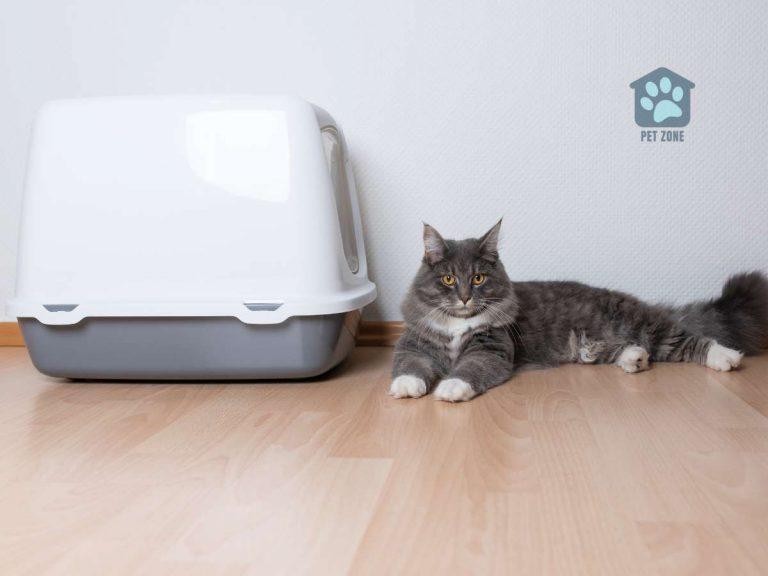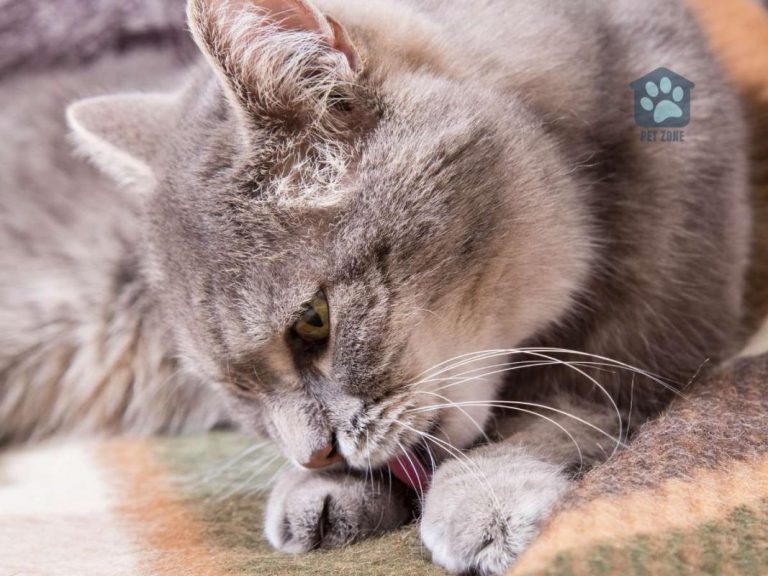Estimated reading time: 8 minutes
You’re about to set off for a long-overdue vet appointment at the vet, but there’s just one small hitch – your ordinarily charming and docile feline has transformed into a ball of fury at the mere sight of their carrier.
Suddenly, your peaceful morning has devolved into a high-stakes battle of wits between human and cat. If this scenario sounds all too familiar, don’t despair! You’re not alone, and there is hope.
The ability to get an angry cat into a carrier is an art, one that requires patience, strategy, and a bit of creative thinking. In this article, we’ll share ten tried-and-tested tips to help your cat and you turn this daunting task into a walk in the park.
Train Your Cat to Like the Carrier
While the sight of a carrier might signal an undesirable car ride to the vet to many cats, it doesn’t have to be this way. Helping your cat to get used to the carrier can go a long way in easing the process of getting them inside.
Begin by placing the carrier in a spot where your cat frequently hangs out, allowing it to become part of their everyday environment. Keep the carrier door open so your cat can explore it on their terms. Consider adding soft bedding, some favorite cat toys, or even a piece of clothing that carries your scent, to create a comforting environment.
You could also try feeding your cat in the carrier, starting with placing the food or cat treats just inside the door and gradually moving it further back over time. This process helps to associate the carrier with positive experiences and makes it a familiar, safe place for your cat. Remember, patience is key. This is a gradual process that might take weeks or even months, but it is sure to make future endeavors much less stressful.
Choosing the Right Cat Carrier
The choice of the carrier can make a significant difference in your cat’s comfort and willingness to enter it. When shopping for a cat carrier, look for one that is sturdy, secure, and easy to clean. It should have plenty of ventilation and should be large enough for your cat to turn around, stand, sit, and lie down comfortably.
For a more aggressive cat, a top-loading carrier could be particularly beneficial. These carriers allow you to gently place your cat inside, reducing the potential for stress and confrontation that can come from attempting to coax or push them through a front door.
Materials also matter. Carriers made from hard plastic can offer better protection and are typically easier to clean, while soft-sided carriers might offer a cozier environment and are often lighter for transport.
Remember, the carrier should not only be comfortable for your cat but also practical for you. Handles should be sturdy, doors should close securely, and if you plan on traveling by plane, ensure the carrier meets airline specifications.
Wrap Your Cat to Ease Their Resistance
If your feline friend is particularly resistant or aggressive, one technique that can help is wrapping them gently in a blanket or towel before placing them in the carrier. This is often referred to as the “burrito” or “swaddle” technique.
This serves two main purposes: first, it can help to calm your cat by providing a sense of security and comfort, similar to how swaddling works for infants. Secondly, it restricts their movement and reduces the chance of them lashing out, which can make the process of getting them into the carrier safer and less stressful for both of you.
It’s crucial to ensure the blanket or towel isn’t wrapped too tightly and that your cat can breathe comfortably. Once they are securely and gently wrapped, you can carefully lower them into the carrier.
Optimizing the Carrier Setup for Easier Entry
Your cat’s reluctance to enter the carrier could be reduced with an optimized carrier setup. If you have a top-loading carrier, make good use of it. It allows you to gently place your cat inside the carrier instead of attempting to coax them through the front door, which can often trigger resistance.
Consider taking the entire top or one side off the carrier if possible. This can turn the carrier into a less intimidating open bed, allowing you to easily set your cat inside before replacing the top or side.
Another idea is to use a synthetic feline pheromone spray in the carrier. These sprays are designed to mimic natural cat pheromones and create a sense of security and familiarity for your cat, which can make the carrier more appealing.
Safely Guiding an Unwilling Cat into the Carrier
Despite our best efforts, some cats might still resist getting into a carrier. In these instances, it’s important to know how to safely guide your cat into the carrier.
Put the carrier in a small room with limited hiding spots to help minimize distractions and prevent your cat from running away, making it easier for you to gently guide them into the carrier.
If your carrier has a top opening, hold your cat gently but firmly, supporting their feet and hind end, and lower them tail-first into the carrier. Most cats feel safer when they can see where they’re going, so they might be less likely to resist when lowered in this manner.
In the case of a front-entry carrier, stand the carrier on its end so the door is facing upwards, holding it steady with your body. Pick your cat up, supporting them under their chest and hindquarters, and gently lower them tail-first into the carrier, then gently shut the carrier door.
In either case, do not force your cat or push them from behind, as this may cause them to panic or become more aggressive. Always prioritize your and your cat’s safety.

Utilizing a Carrier with a Top Door for Uncooperative Cats
If you’re dealing with a particularly uncooperative cat, a carrier with a top door can be your best friend. As previously mentioned, a top door allows you to gently lower your cat into the carrier, which is often much less stressful than trying to push them through a small front door.
In addition, when you use a top-loading carrier, your cat’s natural instinct to resist entering a confined space by backing up or spreading their legs out to the sides can be bypassed. By lowering them in tail-first, they’re less likely to see where they’re going, and hence less likely to resist.
This method can also prevent injuries that could occur when trying to force a resistant cat through a front door, making it safer for both you and your feline companion.
Team Effort to Get an Unwilling Cat into a Carrier
Sometimes, getting an aggressive or unwilling cat into a carrier can require a bit of teamwork. Enlisting a friend or family member’s help can make the process easier and less stressful for everyone involved.
One person can carefully hold the cat, supporting their chest and hindquarters, while the other opens the carrier and ensures it remains stable. Then, working together, the person holding the cat can gently lower them into the carrier.
It’s crucial that the person helping you is someone the cat is familiar with and comfortable around. Having a stranger participate could heighten your cat’s stress and make the process more difficult. Always communicate clearly with each other during the process to ensure a smooth and safe experience for your cat.
Using Gloves to Get an Aggressive Cat into a Carrier
Aggressive cats can sometimes scratch or bite when they feel threatened or stressed, such as when they are being put into a carrier. To protect yourself during these instances, it might be helpful to wear gloves.
Opt for gloves that are thick enough to protect your hands from scratches and bites, but still allow you flexibility to move and control your fingers. In addition, ensure the gloves reach up to your forearms for extended protection, as some cats may aim their claws there when trying to escape.
However, be mindful that gloves may also make your cat more anxious if they are not used to them. Always approach your cat slowly and calmly, giving them time to sniff the gloves and familiarize themselves with this new aspect before proceeding.
Consider Using a Sedative from the Vet
In cases where your cat becomes overly aggressive or stressed, using a vet-prescribed sedative could be an option. This should always be considered as a last resort and only under the guidance of a trusted veterinarian.
Sedatives can help to calm your cat and reduce their stress, making it easier for you to get them into the carrier. However, they should be used judiciously and only when absolutely necessary, as they can have side effects.
Never attempt to sedate your cat using over-the-counter or human medications, as this could be harmful or even fatal to your pet. Always consult with your vet to determine the best course of action.
Be Patient With Your Cat
Last but not least, the most important tip is to be patient with your cat. Cats can pick up on human emotions, so if you’re feeling stressed or anxious, they likely will too. Remember, their resistance to the carrier is often rooted in fear and anxiety, not defiance.
Take your time with each step of the process. If you see that your cat is becoming overly agitated, give them a break and try again later. Use positive reinforcement such as treats, praise, or pets when they make progress, no matter how small.
Patience and empathy are key in reducing your cat’s stress and successfully getting them into the carrier. In the end, maintaining the bond of trust between you and your cat is more important than any single vet visit or trip.
Conclusion
Successfully getting an aggressive cat into a carrier requires a gentle and patient approach. By following these ten tips, you can gradually acclimate your cat to the carrier and ensure their comfort during transport for a vacation or vet visits.
Remember to prioritize your cat’s well-being and provide positive associations with the carrier to create a stress-free experience for both of you.









Thank you for the tips! Very helpful for me, I have one naughty cat that is always difficult to put in the carrier.
Handling an aggressive cat can be a challenging task, am glad you have shared these tips on how to handle such a situation.